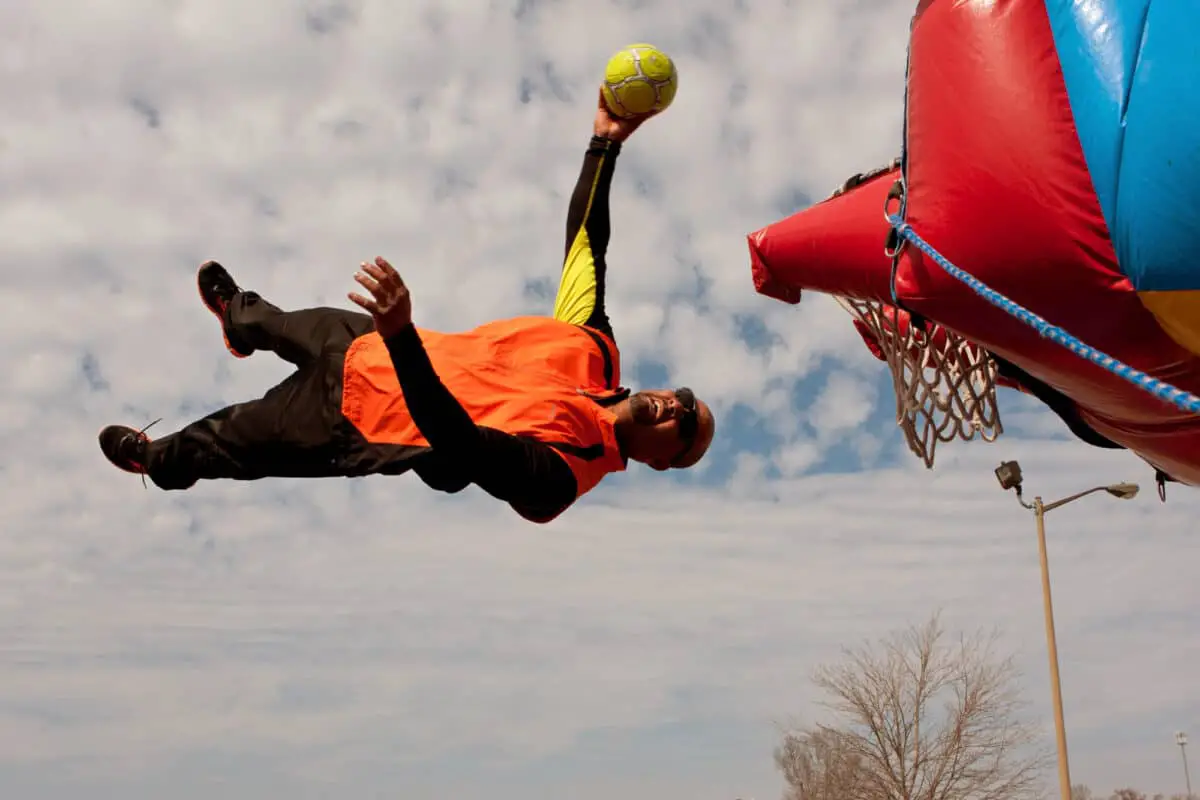Jumping on a trampoline is a fond memory for many adults. We should, however, think of some of the common trampoline injuries particularly to children. They can recall long hours of fun, jumping on their own, or a friend’s trampoline. Jumping releases endorphins that enhance mood and help increase the circulation of oxygen. This makes the person jumping feel a rush of happiness.
However, many emergency room nurses and doctors shake their heads at the sheer number of people who end up in the emergency room with a trampoline injury. According to the Consumer Product Safety Commission, over 500,000 trampolines are sold each year in the U.S.
The majority of trampoline injuries are in children. According to the Journal of Pediatric Orthopedics, more than a million people ended up in the emergency room from a trampoline injury between 2002-2011. The majority of the injuries were to children under the age of 16.
The American Academy of Pediatrics recommends that families not purchase a home trampoline due to the high number of injuries which occur each year, which has sparked debate as to whether or not trampolines should be banned.

Related Reading: Why Are Trampoline Mats Always Black?
What Types of Injuries are Most Common From Trampolines?
1. Sprains
Sprains are common injuries for people who jump on a trampoline. Most often, they are sprains to the knee, ankle or foot. This is typically caused by the impact of jumping repeatedly, sometimes with great force.
The risk for sprains can be reduced by limiting the occurrence of risky maneuvers.
2. Broken Bones
A large number of trampoline injuries are broken bones. The most common bones broken on a trampoline are the elbow and the forearm. However, people who trampoline have broken other bones, including legs, feet, and in the worst cases…spines.
It is very easy to become injured on a trampoline. A foot misplaced, or falling wrong can cause sprains and broken bones. Teenagers are particularly prone to bone breaks. Many enjoy risk-taking and adrenaline and give little concern for their safety.
Breaks to the radius and ulna are the most common. A third of broken bones are long bone fractures in both the upper and lower part of the body.
3. Concussions
A concussion is another common trampoline injury. Concussions can occur when individuals get a hard hit to the head. The ways these injuries happen are varied.
Jumpers can get concussions by hitting their head on the trampoline, bumping heads together with another person jumping on the trampoline, and being bounced around by other jumpers.
Many people have also gotten concussions from jumping too hard. Concussions received on a trampoline can be serious.
According to Stanford Children’s Health, injuries happen even if the trampoline is padded and has a net enclosure.
4. Head or Neck Injuries
People who jump on trampolines risk receiving a neck or head injury. Each year, thousands of people are seen in the emergency room due to neck and head injuries received on a trampoline.
Head and neck injuries commonly occur when children jump on the trampoline with another child. Children also enjoy trying to do tricks on the trampoline, which is riskier.
People who try to do cartwheels, flips, somersaults, or other tricks increase their risk of a head or neck injury. Neck and head injuries are considered very serious because they can lead to spinal cord injury.
5. Spinal Cord Injuries
When children or adults receive neck or head injuries, the injuries should be taken very seriously, as they can lead to spinal cord injuries, which could turn to paralysis, or in the worse cases, death.
A large percentage of injuries to the spinal cord began with a neck or head injury.
Paralysis from a spinal cord injury can happen when people who are jumping bump into each other, fall off the trampoline (even worse if the ground is concrete), or fall onto the metal trampoline frame or springs.
6. Lacerations
Lacerations, whether large or small, are also an injury commonly seen when individuals are injured on a trampoline. Most cuts, scrapes, or lacerations are small, but some can be larger and require stitches in a medical facility.
These cuts and scrapes are the lesser of the risks of jumping on a trampoline.
Trampolines and The Risk for Injuries
Trampolines can be tons of fun, but they can also be the perfect storm when it comes to being in the right place, right time, for injuries.
People can get injuries if they land incorrectly while they are jumping on a trampoline. Often, injuries pop up when children or teenagers try to do tricks like flipping in the air, cartwheels, or somersaults.
Collision with other jumpers dramatically increases the risk of injury and can make adding things like basketball hoops to your trampoline more dangerous.

Preventing Common Trampoline Injuries
If your family chooses to purchase and use a trampoline, safety precautions should be taken. The Mayo Clinic suggests that families take the following preventative precautions:
- Families should allow only one child at a time to use the trampoline. By only allowing one person at a time to jump on the trampoline, injuries by collision with others can be eliminated as a risk. Many significant injuries stem from people jumping together and increases when there is a significant size difference between the jumpers.
- Parents must make sure that the trampoline is padded, has covered springs, and has a net with strong webbing. Injuries commonly occur when people fall and hit their head on the metal springs, or fall off of the trampoline due to a lack of netting. Protective netting can greatly reduce the risk of injuries by falling over the side of the trampoline. Correctly attached netting can help jumpers avoid contact with the metal springs or frames that support the jumping surface of the trampoline.
- Before purchasing a trampoline, homeowners should also make sure that their homeowner’s policy covers trampoline injuries. The majority of homeowner’s insurance does not cover injuries incurred on a trampoline.
- Kids jumping on a trampoline without adult supervision should never be allowed. A supervising adult should always be present. Since children are the main users of the trampoline, adult supervision is crucial. Adults who are supervising jumpers can make sure that only one jumper is jumping at one time. Supervision can also ensure that risky behavior and tricks be kept to a minimum.
Are Trampolines TOO Dangerous?
Trampolines can be tons of fun, but they can also be dangerous if not used correctly. Safety should always be the priority to reduce common trampoline injuries. By using proper safety techniques, using a trampoline can be a bit safer, and injuries kept to a minimum.
The use of backyard trampolines has increased in the past year, in large part due to the stay-at-home orders during the COVID-19 pandemic. However, along with this increasing popularity, increasing injuries have been seen in emergency rooms and doctor’s offices across the country.
According to the American Academy of Orthopedic Surgeons and the American Academy of Pediatrics, the use of backyard trampolines should be discouraged.
They also recommend that children under the age of six should not participate in jumping on a trampoline. Most people treated for trampoline injuries are younger than 17 years old.
Trampoline Health Benefits
Although safety should always be the priority for people when using a trampoline, there are some health benefits to using one.
A trampoline is a great way to keep kids moving. Kids purely enjoy the activity of jumping, but their bodies can benefit from safely jumping.
Trampolining works muscles that may not otherwise be used, and also enhance the muscle development of children.
The activity of jumping can also strengthen bones, promote the circulation of the lymphatic system, and strengthen the immune system.
It is also beneficial to the detoxification of the body and helps push damaging toxins out of the cells.
The Pros and Cons of Trampolines
There are positives and negatives to using a trampoline. Parents should keep in mind the common trampoline injuries while looking to buy a trampoline.
By investigating and researching the pros and cons of trampolines, parents can make an informed decision whether or not to purchase and use a trampoline.
